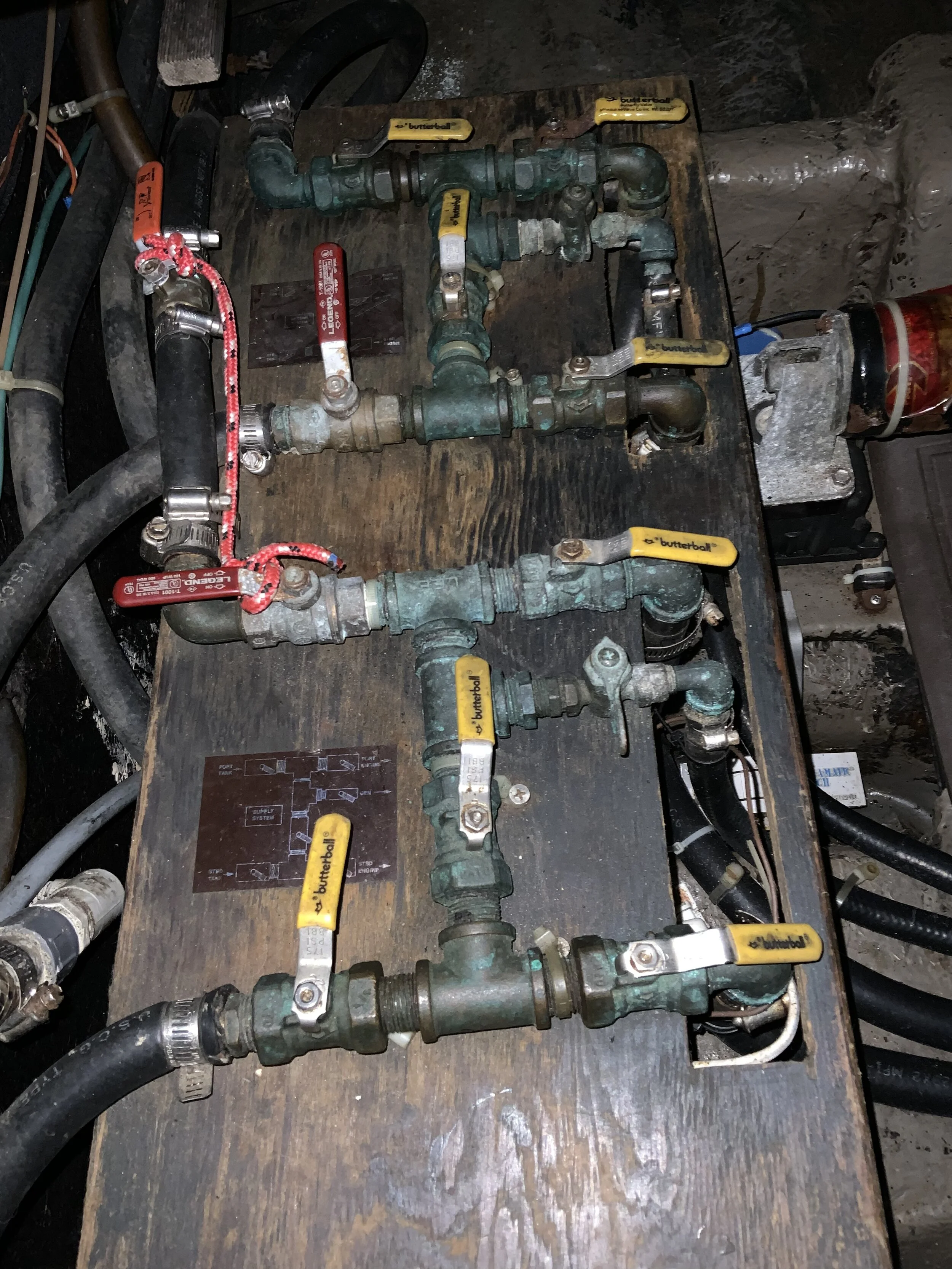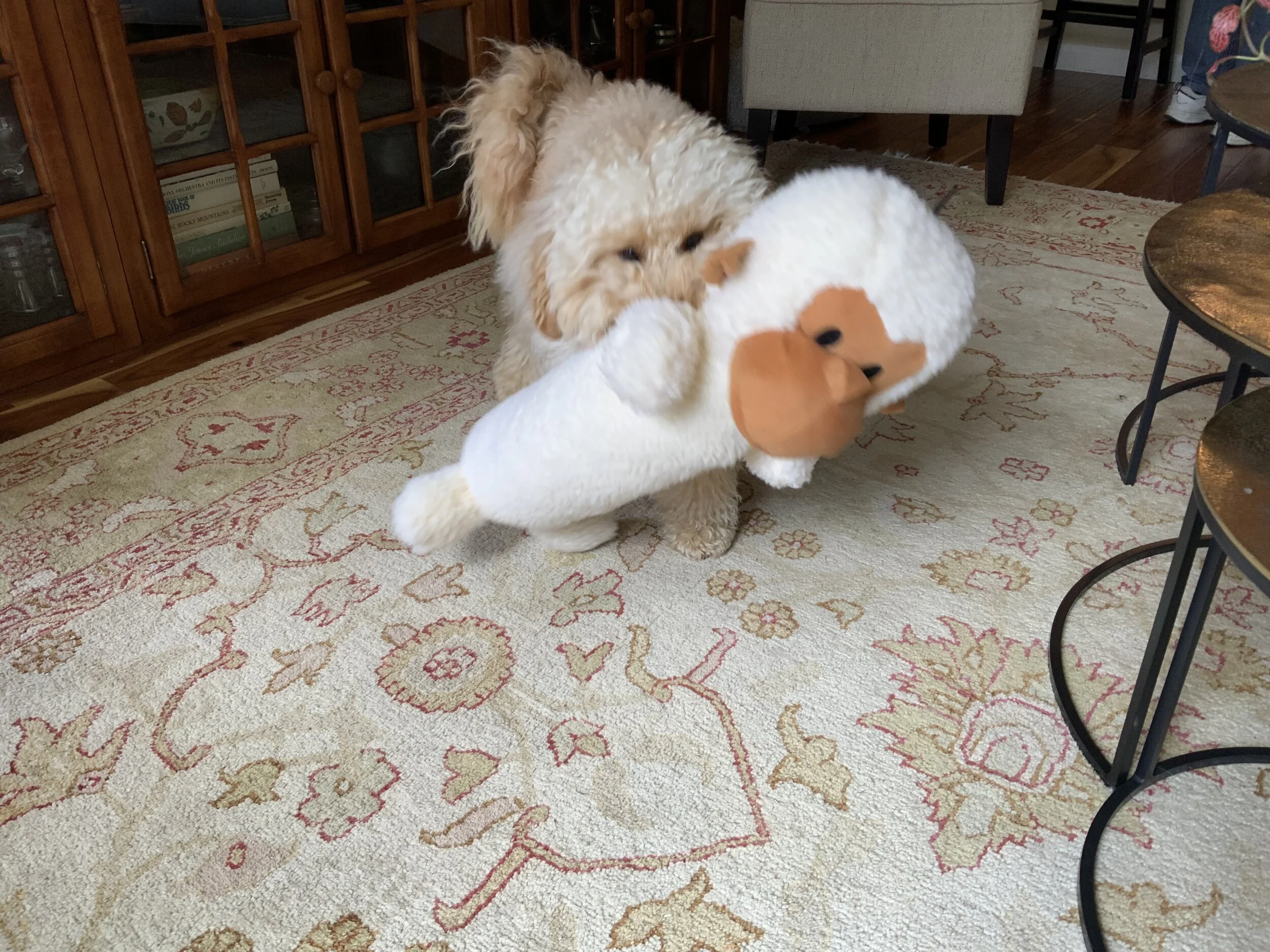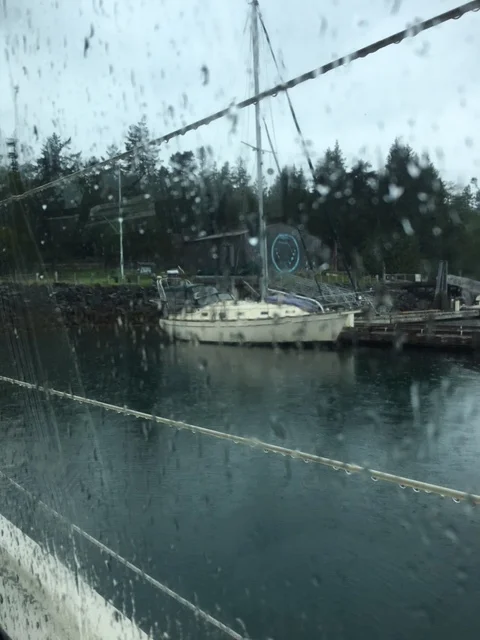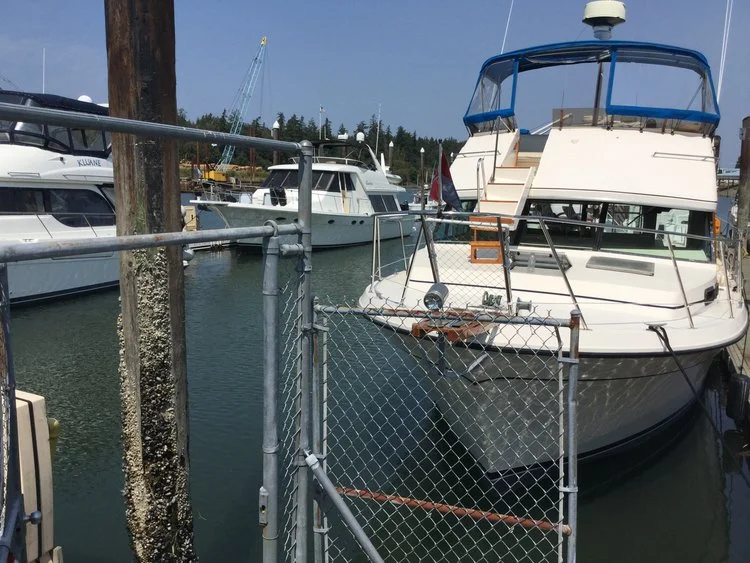#1 PINEAWEIGH 2021 -- IT'S JUST THAT EASY
Boating 2021: Let the Season Begin!
In the log I wrote,
Thursday, April 15, ‘21 PINEAWEIGH
“We slept cozily last night under eiderdowns with PineAweigh still in her covered shed. After a ritual romp on his people’s bed, Scooter settled in his own—five steps up from the stateroom, cross the salon, one down to the galley, two more leading to the forepeak. One jump to his bed in place on the bottom bunk.”
On Wednesday, all things needed for a five day cruise had been packed up at home, carted to the car, crammed therein, transferred from car to dock carts at Bremerton Yacht Club, cautiously, during a very low tide, controlled down a steep ramp, then safely pushed along ‘A’ finger to slip #214, hefted up from carts onto PineAweigh’s cockpit floor, carried down three steps to the salon, some of it down five steps more to a stateroom, or across the salon, one step down to the galley or, lowered by means of a little ladder into the boat’s bowels to the extra Igloo freezer; or from the galley forward, down two steps and a small hall to the forepeak where dry goods are piled in boxes on the top bunk. You’re with me, right? As nearly as space allowed, supplies got stored, and with a little time and effort, attitudes adjusted.
Thursday - near noon
We meant to get a jump on weekend boaters, but as we made the 90° turn into Blake Island’s Marina we saw the the jump had been executed. The docks were packed. Turn away we did. How about Poulsbo? We hadn’t been there in a good while. We called the port and were assured that a few 30’ spaces were available on the outside of “F” dock. But we are 44’. “No problem. Look for an ‘Open’ sign, stern in, and let your extra 14’ hang out. Take any slip not marked “Reserved.”
We headed west on Puget Sound, toward rips in Rich Passage where the current was running strong, and in our favor. From there, we would turn about 90° north into Port Orchard channel which would take us to Poulsbo where we expected (ha ha ha) a choice of ‘Open’ slips.
Here’s Thursday’s story:
“I think we should switch fuel tanks,” said David, gazing at gauges.
“Sure. Do it. I’ll double-check the manifold after you’re done,” said I from the salon helm. I held our speed at about 7kts. That is, I did until the starboard engine RPM drop precipitously; like a rollercoaster plunging into its first huge descent. This is crisis of some sort. Then, astute captain that I am (read “What’tha!!) . . .
“What the heck!” I slammed gears and throttles to idle, swinging around in the captain’s chair to face David casually climbing up aft stateroom stairs.
“What did you DO?! The starboard engine is not getting fuel!”
As I write, I remember the moment. I want to think my voice was like that of a professional pilot, calm in the storm, but I know better; I am more the terrified passenger pushing the call button. Scooter measured the moment, and sulked off to his bed.
“Hummm,” said David, the retired but genuine professional pilot. Calm. He returned, I returned, we took turns to the fuel manifold to find the problem. Which, after a bit of “Oh, yeah,” we solved. Not in an admirable way, I must say; given that I was there. We reached Poulsbo with both engines roaring. But, getting a slip? That’s another story of inches and mud, not this one.
For now, think: “Fuel manifold.”
Imagine an unfinished wooden platform, serving platter size, just inside the rear engine-room door located in the aft stateroom of our 1980 Bayliner Bodega, where, when you open said door while underway, you are assaulted by the sound of two massive Volvo diesel engines churning noisily enough to stun a charging rhinoceros. Those engines have roared through four thousand and some hours, and are ready to churn a few thousand more — because that is what they are built for — as long as fuel is fed from one of two fuel tanks. Fuel lines reach feeding pipes there, on the platform.
“Let’s switch to the port tank,” said the man with whom Scooter and I share life. The sun was shining, the wind calm, the Washington State Ferries moving east and west had both passed us by, their wakes easily quartered. What could go wrong? Let me spare you the details of the next, say, few minutes while ‘what could go wrong’ got worked through, worked over, and worked out.
Picture the wooden platform upon which the fuel manifold is secured. Picture the manifold— bronze pipes, several times knotted with connections. Picture side by side pipes in the shape of two uppercase “H”s.
HH
The bottom of each H leg (count them, four) connects to a heavy, mostly buried, black hose that carries fuel to, and from, two concealed fuel tanks. And, oh, don’t miss it; at the top of each H-leg are hoses that carry diesel fuel to, and from, two roaring, green Volvo engines each nearly the size of a rhinoceros body.
This might be the time to mention that when one wishes to switch from, say, the concealed-under-our-bed center fuel tank to the concealed-behind-the-wall of the stateroom shower, one must tend to the placement of ten valve handles that rest atop the ‘H’ pipes. Eleven, actually. There is that orphan switch that controls fuel to the generator. Ignore that one for now. This is an old boat. Those ancient ten handles are binary in nature, not unlike the most sophisticated computers: on/off; open/shut. It’s that easy.
It wasn’t.
Because we hadn’t been aboard PineAweigh in months, because we hadn’t thought “manifold” for at least that long, and because the starboard engine was crying, “ s-t-a-r-v-i-n-g!,” we threw open all the handles. We fed and drained fuel from both tanks while we worked to remember how with ease, we once positioned handles. Anyone could do it, for goodness sake. Follow me here.
H-right leg feeds from the center tank into both legs on the right side of the mainfold. The short horizontal of H-right, and its left leg, lets fuel feed to the port engine—that is, if the five H-right handles align with the pipes.
Wait. Re-think. Left-H handles return fuel to, wait . . . Left side, left H, needs to be open on the left, but not on its right to . . . Hold it. It’s simple. The problem was that the handle at the center bar on the feeding H (right side, leading to the left leg) was closed but should have been open, while the— you’ve got it, likely.
It didn’t take long to remember how easy it is to switch between fuel tanks on this marvelous old beast of a boat. She is proudly heavy, proudly aging without implants or reparative surgeries. It’s just that it is easy to think you’ve rightly managed eleven valve handles in a noisy, dark place when, in fact, you managed ten well enough but twisted one in such a manner as to block fuel to the starboard engine. This was like cutting oxygen to a brain. We watched the deprived engine come close to dying.
It didn’t take long to correct two errors — one feeding the engine, one returning fuel to the proper tank by the required manipulation of five handles on each of the Hs, but it did require enormous amounts of adrenaline.
“Really?” Said he when I read what I had so far written. “Adrenaline?”
“Well, yeah . . .” Said I, remembering the scurry. What did you experience?”
“Frustration,” said he.
Here’s boating with the Pines:
See Barbara respond to things like a screwed up manifold. See Barbara visualize a boat blowing up.
See David responding. See David noticing wide open, calm water in which to bob while the problem (no big thing) is solved.
Our cruising, 2021, begins.






